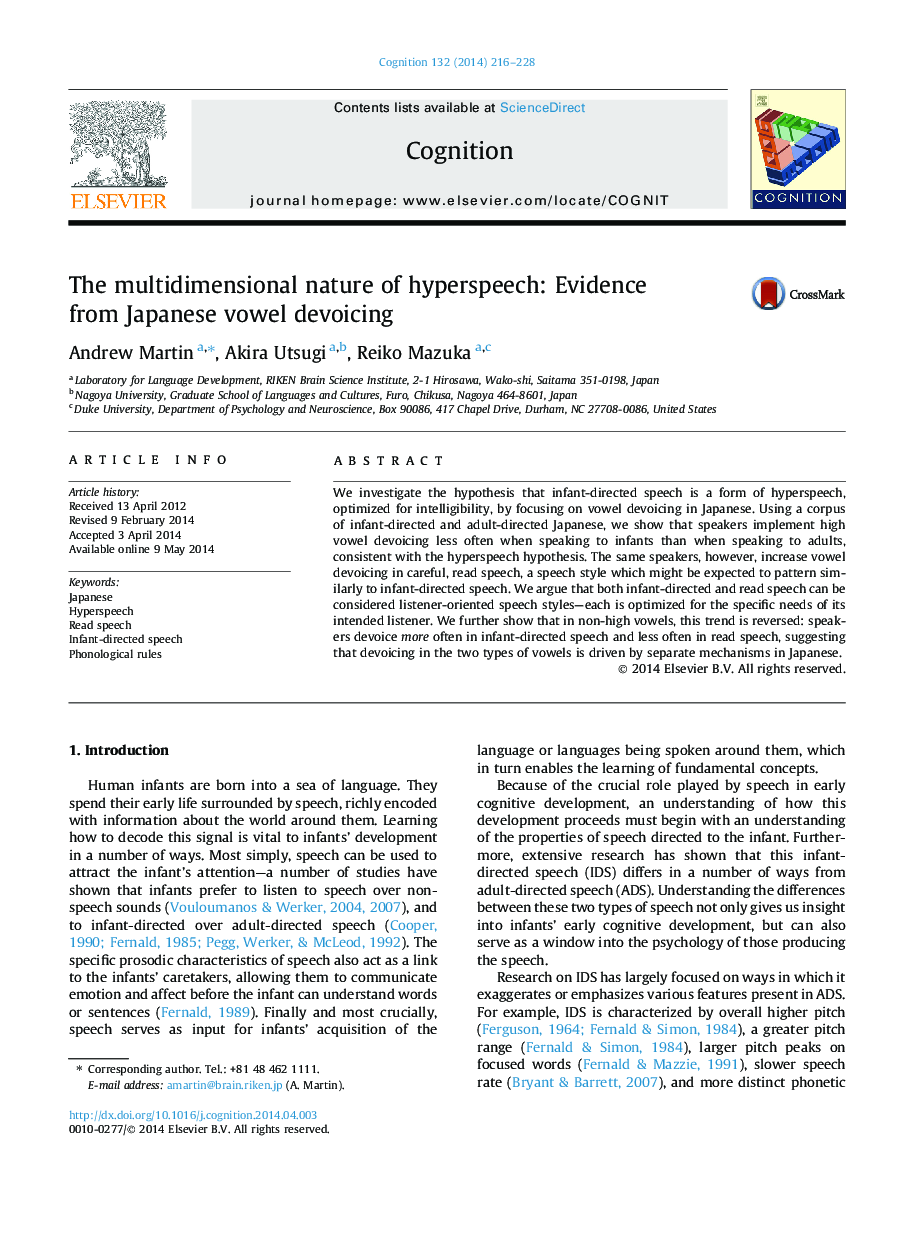| Article ID | Journal | Published Year | Pages | File Type |
|---|---|---|---|---|
| 926376 | Cognition | 2014 | 13 Pages |
•We examine the effects of audience on vowel devoicing in Japanese.•We compare read speech, adult-directed speech, and infant-directed speech.•Speakers show opposite trends across speech styles in high and non-high vowels.•Hyperspeech is tailored to the specific needs of different types of listener.
We investigate the hypothesis that infant-directed speech is a form of hyperspeech, optimized for intelligibility, by focusing on vowel devoicing in Japanese. Using a corpus of infant-directed and adult-directed Japanese, we show that speakers implement high vowel devoicing less often when speaking to infants than when speaking to adults, consistent with the hyperspeech hypothesis. The same speakers, however, increase vowel devoicing in careful, read speech, a speech style which might be expected to pattern similarly to infant-directed speech. We argue that both infant-directed and read speech can be considered listener-oriented speech styles—each is optimized for the specific needs of its intended listener. We further show that in non-high vowels, this trend is reversed: speakers devoice more often in infant-directed speech and less often in read speech, suggesting that devoicing in the two types of vowels is driven by separate mechanisms in Japanese.
